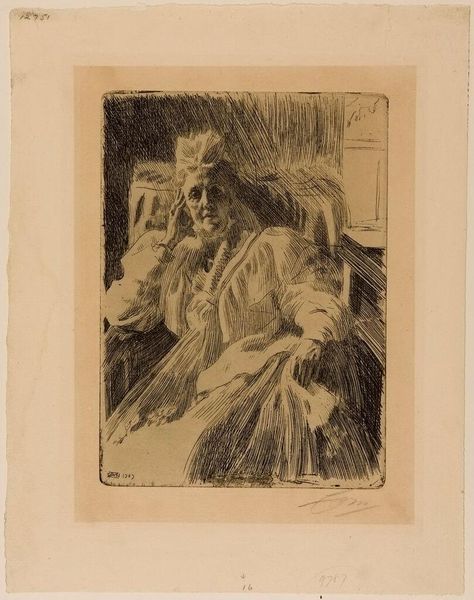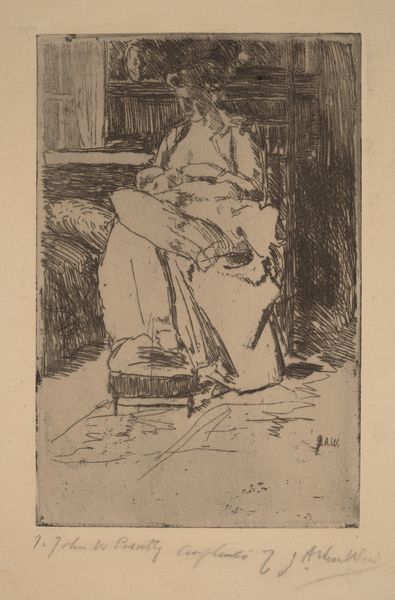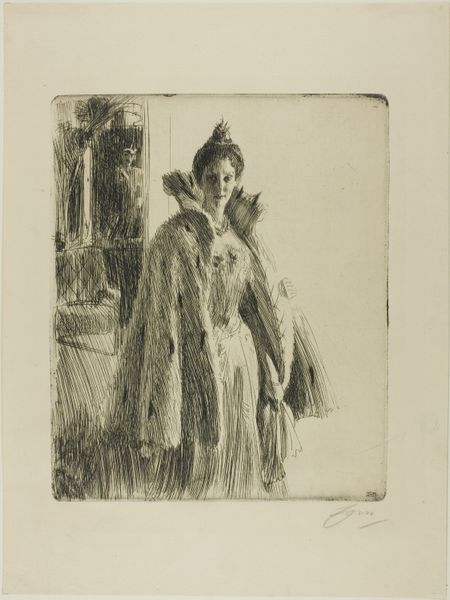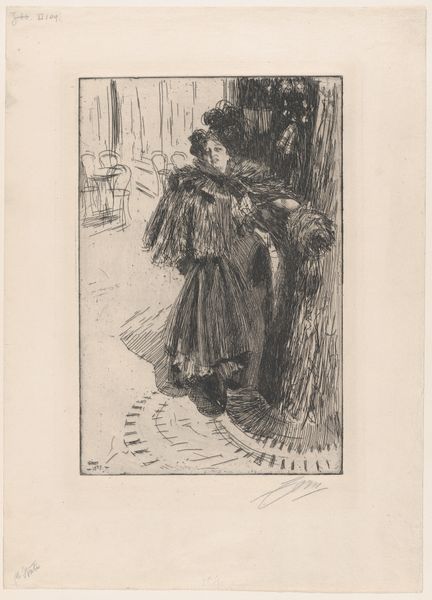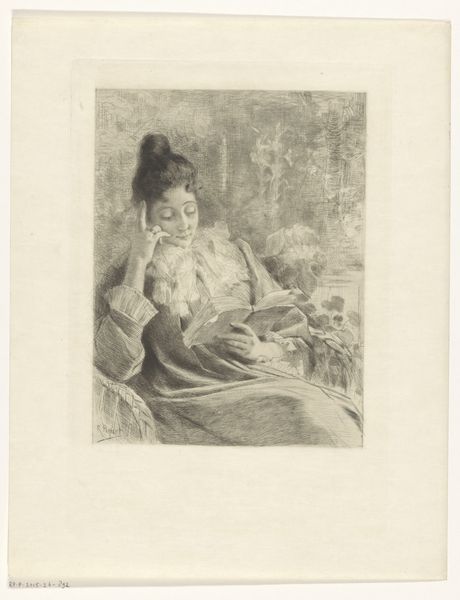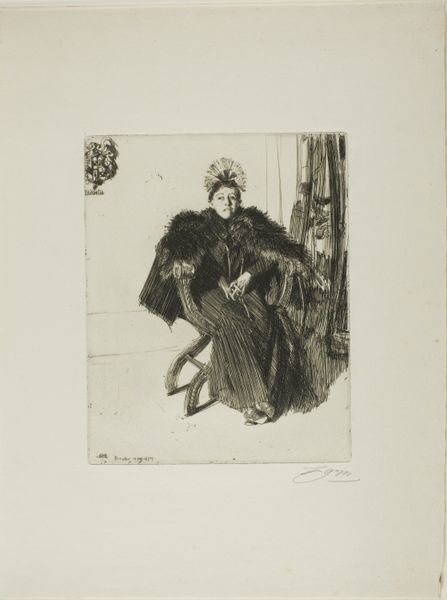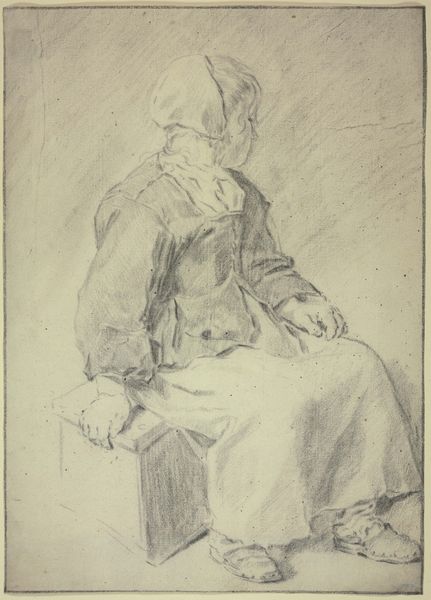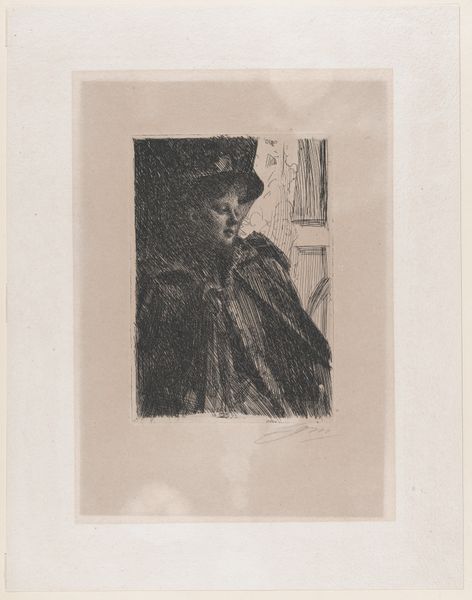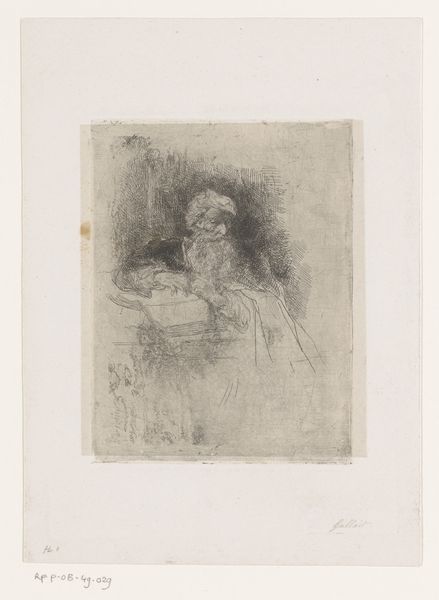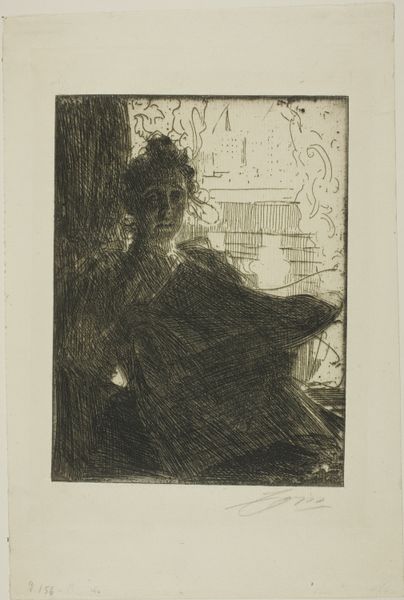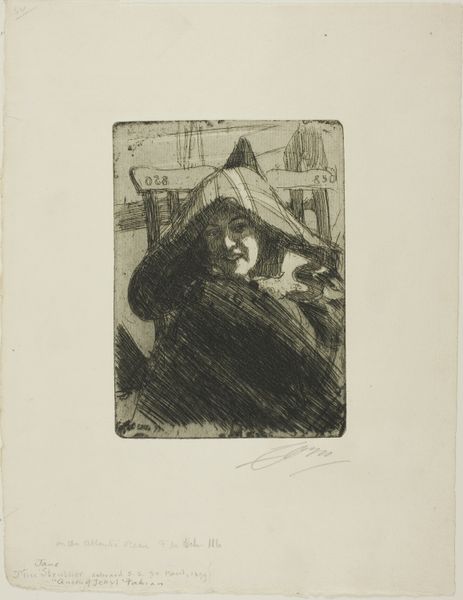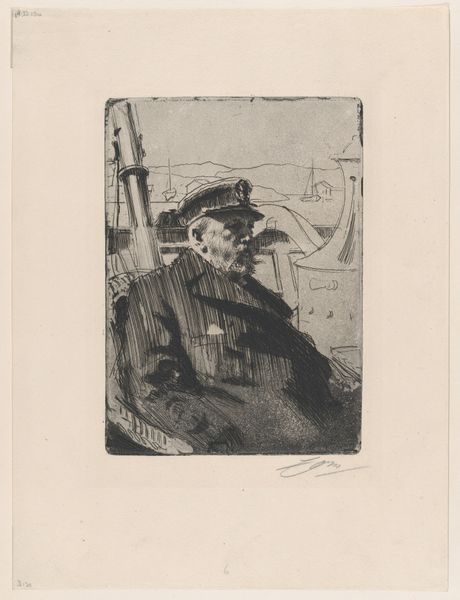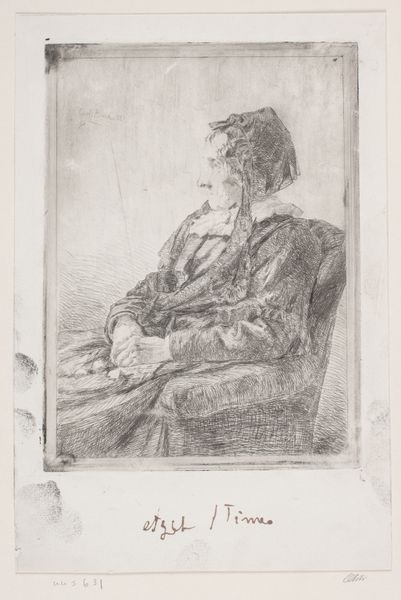
Dimensions: Plate: 9 3/4 × 7 1/16 in. (24.8 × 18 cm) Sheet: 14 3/16 × 11 3/16 in. (36 × 28.4 cm)
Copyright: Public Domain
Editor: Here we have Anders Zorn's 1909 etching of Queen Sophia of Sweden, a monochromatic portrait. The etching feels very immediate and personal, almost like a quick sketch. What strikes you about it? Curator: What grabs my attention is the process itself. Etching allowed for the mass production of this image, potentially altering perceptions of royalty and power. How does the material choice—an easily reproducible print—affect the subject's aura, Queen Sophia’s image? Editor: That's an interesting perspective, contrasting the traditional view of royalty. Does that imply Zorn was trying to democratize the Queen's image through mass production? Curator: Not necessarily democratize, but definitely commodify. Think about the market for these prints. Who was consuming this image, and what did owning a copy of a royal portrait signify in 1909? It makes me wonder about Zorn’s relationship with his patrons and the public’s desire for these commodities. How much were they, who could afford them? Editor: So, you're focusing on the socio-economic impact and consumption of the artwork. I never considered the print as a commodity before. How does the physical act of creating multiple identical prints change our understanding of "originality" or "artistic value"? Curator: Exactly! It challenges our assumptions about artistic labor and the "aura" of a unique artwork. How does mechanical reproduction affect our interpretation of this particular image versus, say, a one-off painted portrait? This is art responding to new technologies available. Editor: It makes me think about accessibility and how this print, made through etching, might have reached a wider audience than a painting could. Curator: Precisely. Looking at the process and material really reshapes how we interpret even a traditional subject like a royal portrait. I appreciate your insights! Editor: And I never thought about art as being a commodity available to various social groups, produced through a specific material like etching! Thank you.
Comments
No comments
Be the first to comment and join the conversation on the ultimate creative platform.
